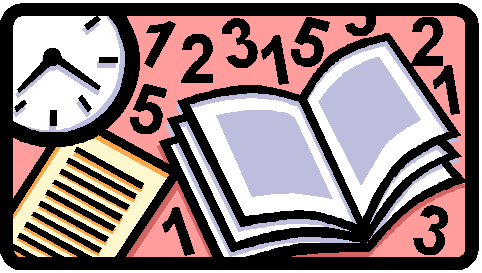PLANNING
HOW TO ACCOMPLISH MORE EACH DAY
& SUCCEED
Planning
is the most important step for effective and efficient Time Management.
When you leave for your office in the morning do you have a written plan on what you will accomplish that day? Are you clear on what needs to be accomplished and how you will accomplish your goals/tasks? Or do you go to work without a clear plan? Do you get caught up in doing things that seem to take priority over everything else at the time? Do you spend your day putting out fires and not getting any closer to accomplishing your goals? If you don't have a scheduler program - get one. There are many great programs out there. (Too many programs and devices to name here, but you get the point.) If you own a Blackberry, IPad or handheld device but don't use… it's time that you start using it. Obviously at the time you made the purchase, you knew that you needed to take control of your time/schedule. And though you may have failed to take control of your time yesterday, that doesn't mean that you have to fail again today. Break the cycle!
Great Tip:
Why try to remember all the little details in your life, when you can
exploit technology to do the remembering for you?
Even a simple program like MS Outlook and a clipboard can do the
trick!
Anyway, back to planning your day…
1. Always
plan your day, the night before. Take 15 minutes and enter in all
appointments you have scheduled for the next day (if you haven't done so
already). Make sure that you block out the actual time for each
appointment.
2. Make a list of all the tasks that you need to accomplish for the
day and block out the time you will need to accomplish each task. By
blocking out the time, you will have a visual representation of your
workday and you will know what can and cannot be accomplished during your
workday.
3. Do not mistake goals for tasks. A goal is made up of a number
of tasks. Don't make the mistake of blocking out one hour to
accomplish a goal, when the three tasks that make up the goal will
actually take three hours to complete.
Process planning can be very handy at this stage.
4. Look at your schedule/plan throughout the day to keep yourself on
schedule.
5. Do not get caught up and start working on things that are not on
your schedule/plan. When issues arise that are not part of your
schedule/plan, don't drop your plans to address the issues. Instead,
plan in advance for the issues that "pop up", and block out an
hour at the end of your workday that you can use to address those issues.
6. Don't let incoming phone calls mess up your schedule either.
Let the caller know that you are in a meeting (you don't have tell
them that you are in a meeting with yourself), and that you will call them
back (during the hour you blocked up for the issues that "pop
up").

Planning Rules
Three
easy rules can be followed to help you to
significantly
improve your productivity each day:
- Make a "to-do" list on a clean sheet of paper, in MS Outlook, in your day planner, or on your Ipad. List all items you would like to complete today. Getting the items on paper gets them out of your head and in front of you. Having all items on one list helps to bring these items into control and avoids duplication and overlooking of important items. One list also gives a clearer picture of the total amount of work to be done and allows for better scheduling. Fewer things will slip through the cracks.
- Prioritize the "to-do" list. This is where electronic lists able to be sorted come in handy. Select from the list the most important item to be done. Ask yourself, "If I could only do one item today, which would it be?" Put the numeral "1" to the left of that item. Next, select the second most important item and label it "2." Continue the process labeling all items in numerical order. As you start the day, begin with the first item on the list. Complete it (around the interruptions that will inevitably come your way) and then go to the second item, then the third, etc. You may not complete the list but you will always complete the most important items. Making a "to-do" list is an important first step but prioritizing that list ensures that we focus on the more important items rather than giving in to the temptation of working on the less important items because they may stand out more or because they are easier to do.
- Follow this process every day. Wearing yesterday's dirty old shirt or fingering through yesterday's stale lunch is not too appealing. So, just as you start the day with clean clothes and a new lunch, start with a new, prioritized "to-do" list. Emotionally, it will give you a lift to start each day with the new plan, but, more importantly, it will give you a chance to reprioritize items left over from the day before. For example, yesterday's item #9 may become today's item #1. If you are working off yesterday's "to-do" list, that important item may not receive attention.
Daily planning will sharpen daily focus as priorities shift with each day. These three rules will help you to significantly improve your performance each and every day and will help to reduce that free-falling feeling. You will find you are getting more done in less time and you will feel more productive and less stressed each day. (And that is a good thing!)
Return to "Tips & Tricks"

Time for what you want!

Time Management

Leadership Qualities

Efficiency and Effectiveness!

Set Goals!
Do a "TO-DO" list